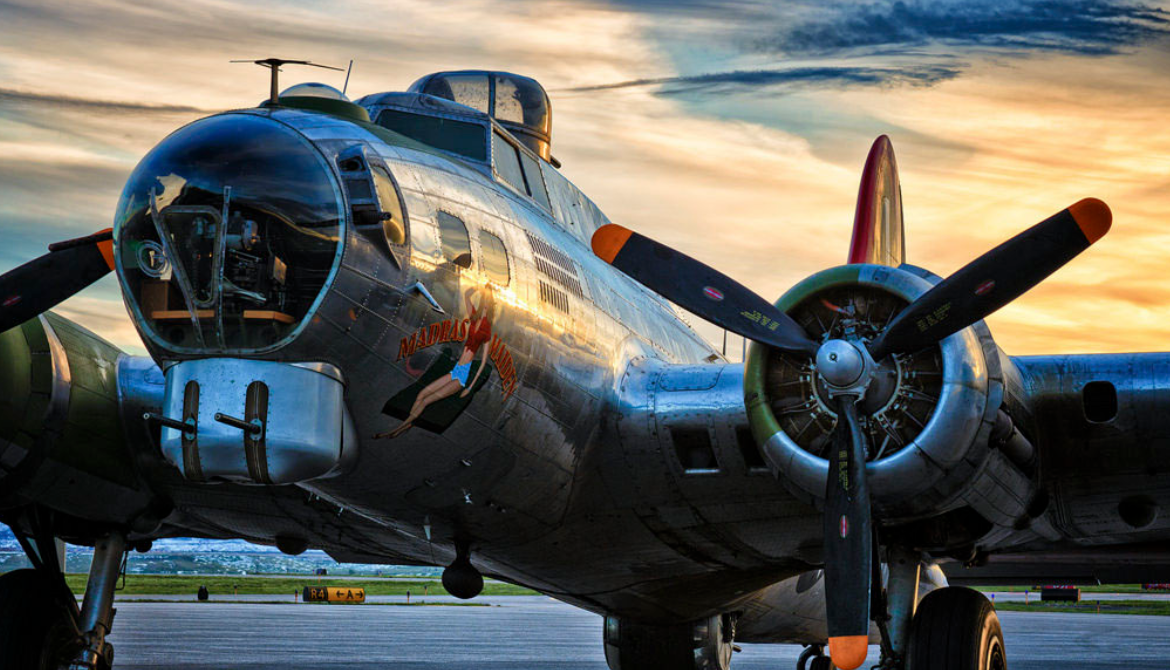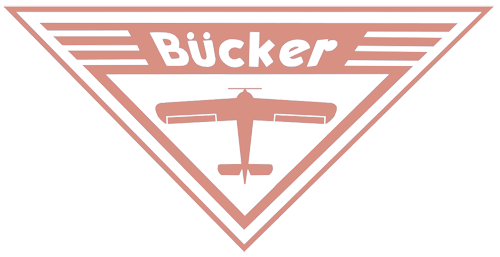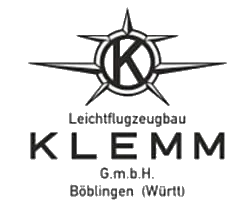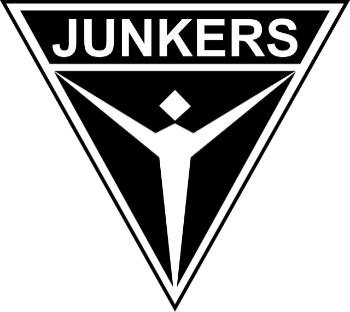Boeing Military Boeing B-17 G Flying Fortress
 |
|
| General information | |
|---|---|
| Type | Heavy bomber |
| National origin | United States |
| Manufacturer | Boeing |
| Status | Retired; small number in service as warbirds |
| Primary users | United States Army Air ForcesRoyal Air Force |
| Number built | 12,731 |
Variants
Boeing XB-38 Flying Fortress
Boeing YB-40 Flying Fortress
Boeing C-108 Flying Fortress
Developed into Boeing 307 Stratoliner
.
History Boeing Military
Boeing B-17 Flying Fortress
First Flight 28 July 1935
Introduction April 1938

The Boeing B-17 Flying Fortress is a four-engined heavy bomber developed in the 1930s for the United States Army Air Corps (USAAC). Fast and high-flying for a bomber of its era, the B-17 was used primarily in the European Theater of Operations and dropped more bombs than any other aircraft during World War II. It is the third-most produced bomber of all time, behind the four-engined Consolidated B-24 Liberator and the multirole, twin-engined Junkers Ju 88. It was also employed as a transport, antisubmarine aircraft, drone controller, and search-and-rescue aircraft.
On 8 August 1934, the USAAC tendered a proposal for a multiengine bomber to replace the Martin B-10. The Air Corps was looking for a bomber capable of reinforcing the air forces in Hawaii, Panama, and Alaska.[9] Requirements were for it to carry a "useful bombload" at an altitude of 10,000 ft (3,000 m) for 10 hours with a top speed of at least 200 mph (320 km/h)


Gun turret atop the Model 299's nose glazing
The aircraft went through several alterations in each of its design stages and variants. Of the 13 YB-17s ordered for service testing, 12 were used by the 2nd Bomb Group of Langley Field, Virginia, to develop heavy bombing techniques, and the 13th was used for flight testing at the Material Division at Wright Field, Ohio.[36] Experiments on this aircraft led to the use of a quartet of General Electric turbo-superchargers, which later became standard on the B-17 line. A 14th aircraft, the YB-17A, originally destined for ground testing only and upgraded with the turbochargers,[57] was redesignated B-17A after testing had finished
0
KmCeiling
0
KmRange
0
Km/HAircraft Speed
0
Max Crew
Photo Gallery
Boeing B-17 Flying Fortress
First Flight 28 July 1935
Introduction April 1938


Boeing Military Airplanes
Boeing B-17 Flying Fortress
General characteristics
- Crew: 10: Pilot, co-pilot, navigator, bombardier/nose gunner, flight engineer/top turret gunner, radio operator, waist gunners (2), gunner, tail gunner
- Length: 74 ft 4 in (22.66 m)
- Wingspan: 103 ft 9 in (31.62 m)
- Height: 19 ft 1 in (5.82 m)
- Wing area: 1,420 sq ft (131.92 m2)
Powerplant
- Empty weight: (16,391 kg)
- Gross weight: (24,500 kg)
- Max takeoff weight: (29,700 kg)
- Aspect ratio: 7.57
- Powerplant: 4 × Wright R-1820-97 "Cyclone" turbosupercharged radial engines, 1,200 hp each
- Propellers: 3-bladed Hamilton-Standard constant-speed propeller
Specifications
- Maximum speed: 287 mph (462 km/h
- Cruise speed: 182 mph (293 km/h
- Range: 2,000 mi (3,219 km, 1,738 nmi) with 6,000 lb (2,700 kg) bombload
- Ferry range: 3,750 mi (6,040 km,
- Service ceiling: 35,600 ft (10,850 m)
- Rate of climb: 900 ft/min (4.6 m/s)
Related development
- Guns: 13 × .50 in (12.7 mm) M2 Browning machine guns in 9 positions (2 in the Bendix chin turret, 2 on nose cheeks, 2 staggered waist guns, 2 in upper Sperry turret, 2 in Sperry ball turret in belly, 2 in the tail and one firing upwards from radio compartment behind bomb bay)
-
Bombs:
- Short range missions; Internal load only (<400 mi): 8,000 lb (3,600 kg)
- Long range missions; Internal load only (≈800 mi): 4,500 lb (2,000 kg)
- Max Internal and External load: 17,600 lb (7,800 kg)
-
Boeing B-17 Flying Fortress
Links to Youtube & Others
On 8 August 1934, the USAAC tendered a proposal for a multiengine bomber to replace the Martin B-10. The Air Corps was looking for a bomber capable of reinforcing the air forces in Hawaii, Panama, and Alaska. Requirements were for it to carry a "useful bombload" at an altitude of 10,000 ft (3,000 m) for 10 hours with a top speed of at least 200 mph (320 km/h)
Boeing B-17 Flying Fortress
The aircraft went through several alterations in each of its design stages and variants.
Youtube Link
The B-17 began operations in World War II with the Royal Air Force (RAF) in 1941, and in the Southwest Pacific with the U.S. Army.













